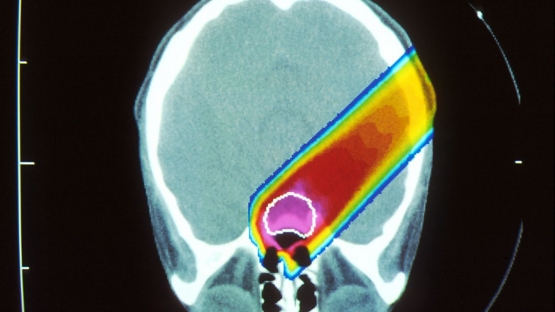Proton beam therapy provides an advanced level of cancer treatment that is increasingly used around the world. One of the main constraints to its wider deployment is high costs, which can be controlled through technical innovation and feasibility planning. This was among the conclusions of an IAEA article on the subject published in the May edition of International Journal of Radiation Oncology and discussed at a related seminar held at IAEA headquarters in Vienna.
"In 2018, around 18% of US healthcare spending will be for radiation oncology," said Indra Das, Vice Chair of the Department of Radiation Oncology at the New York University Medical Center and keynote speaker at the IAEA seminar, 'Growth and Economics of Proton Beam in Cost Constrained Health Care', that took place late last month. "This is unsustainably high."
Fifty-seven particle therapy centres have now been opened around the world, compared with around thirty centres eight years ago, but the majority of these centres remain located in developed countries. "The growth of these treatment facilities worldwide is exponential and will continue, so it is important to keep costs of proton beam technology contained," Das said.
The promise of proton therapy
Particle radiation therapy, including proton beam therapy, uses beams of positively charged particles such as protons to treat cancer, and it has been increasingly used in treating certain conditions including pediatric cancers, certain eye cancers and spine or base of skull tumors. For all diseases and cancers treated, proton beams have a lower risk of radiation to normal tissues, resulting in a lower projected probability of radiation-induced secondary cancer. This is because proton beams can target specific areas while delivering lower radiation doses to more superficial tissues, leaving surrounding normal tissue and organs unaffected.
But deciding which types of cancer should receive priority for proton treatment and whether funds should be spent on this new technology are points of contention among stakeholders. "It's a very complex economic issue, with lots of disagreement within the medical community and among policymakers," said Das. It is against this background that particle therapy is becoming increasingly relevant in the global discussion of cancer treatment options. "There are still many exciting, untapped opportunities in research that need to be explored to help keep costs contained," added Das.
Proton beam technology is still relatively new, but it is becoming more affordable with recent developments in technology, such as improved image guidance, single treatment room facilities and more compact gantries, devices that may rotate 360 degrees around the patient to treat a variety of more complex cancers. Recent improvements in reimbursement programmes for proton therapy are also helping, and better use of networks of facilities around the world is further contributing to accessibility and affordability. Costs will also further decrease as the clinical benefits of particle beams continue to be realized with new opportunities in research. "More centres will be able to offer this therapy in the future because costs are decreasing significantly over time," said Das.
Ensuring feasibility
While reining in costs remains a central aim, a proper focus on planning, preparation, training and support is critical for this technology to be feasible, especially for developing countries, according to the article.
"A feasibility study is the first step towards developing a new proton therapy facility," said May Abdel-Wahab, Director of the IAEA's Division of Human Health, and one of the authors of the article, which focuses on access to the technology in developing countries. "A possible benefit has been recognized in some cancers, such as in pediatric cancers."
When reaching a decision of whether to build a proton center, many factors should be considered, including patient referral patterns, cancer incidence and types, available facilities, as well as the availability of basic radiotherapy services for the population at large, she said. In general, established technologies with proven clinical value take precedence over newer technologies that must first be studied systematically to assess effectiveness and cost-effectiveness. Clinical studies are under way to assess the effectiveness of using protons in a wider range of cancers and these results can help guide the appropriate use of the technology. In addition, careful attention needs to be given to proper training and support of the staff to safely use the equipment including all software.
The article also outlines key recommendations developed by experts that countries or institutions can follow when planning for or initiating a proton therapy project. These include, among others, avenues for organizing and educating key specialists and stakeholders, ways to leverage existing infrastructure, expertise and equipment and approaches to streamlining planning and implementation.





